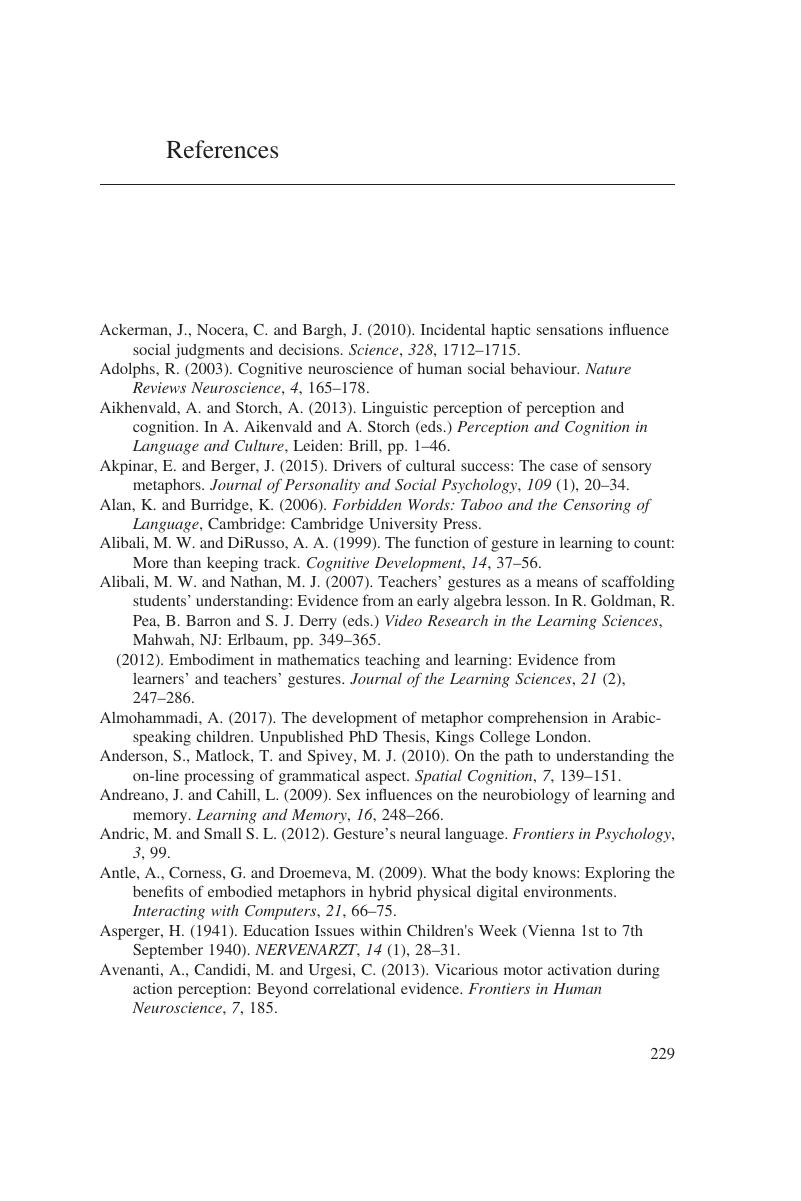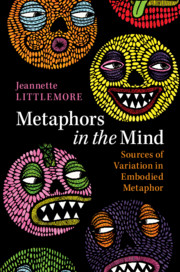Book contents
- Metaphors in the Mind
- Metaphors in the Mind
- Copyright page
- Dedication
- Contents
- Figures
- Preface
- Acknowledgements
- 1 ‘I Am Trying to Climb Everest in Flip-Flops.’
- 2 ‘Would You Prefer a Pencil or an Antiseptic Wipe?’
- 3 ‘I’m Running on This Soapy Conveyor Belt with People Throwing Wet Sponges at Me.’
- 4 ‘This One Sounds Like A Bell and This One Sounds Like When You’re Dead.’
- 5 ‘I Did Not Know Where I Started and Where I Ended.’
- 6 ‘Those Cookies Tasted of Regret and Rotting Flesh.’
- 7 ‘Things Come Out of My Mouth That Shouldn’t Be There.’
- 8 ‘This Is My Body Which Will Be Given Up for You.’
- 9 ‘Malodorous Blacksmiths and Lazy Livers.’
- 10 Conclusion
- Notes
- References
- Index
- References
References
Published online by Cambridge University Press: 27 July 2019
- Metaphors in the Mind
- Metaphors in the Mind
- Copyright page
- Dedication
- Contents
- Figures
- Preface
- Acknowledgements
- 1 ‘I Am Trying to Climb Everest in Flip-Flops.’
- 2 ‘Would You Prefer a Pencil or an Antiseptic Wipe?’
- 3 ‘I’m Running on This Soapy Conveyor Belt with People Throwing Wet Sponges at Me.’
- 4 ‘This One Sounds Like A Bell and This One Sounds Like When You’re Dead.’
- 5 ‘I Did Not Know Where I Started and Where I Ended.’
- 6 ‘Those Cookies Tasted of Regret and Rotting Flesh.’
- 7 ‘Things Come Out of My Mouth That Shouldn’t Be There.’
- 8 ‘This Is My Body Which Will Be Given Up for You.’
- 9 ‘Malodorous Blacksmiths and Lazy Livers.’
- 10 Conclusion
- Notes
- References
- Index
- References
Summary

- Type
- Chapter
- Information
- Metaphors in the MindSources of Variation in Embodied Metaphor, pp. 229 - 265Publisher: Cambridge University PressPrint publication year: 2019



